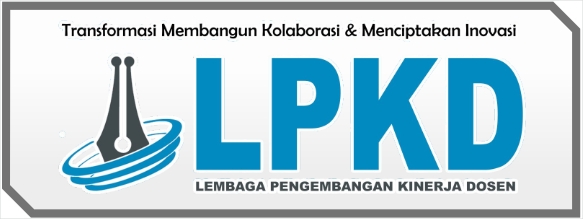Potential of Utilizing Arabika Coffee Dregs (Coffea Arabica L.) as Biochar for Increasing Fertility of Plant Media
DOI:
https://doi.org/10.55606/icesst.v2i2.332Keywords:
Arabika, Biochar, Coffee Dregs, Soil FertilizerAbstract
Coffee dregs biochar is an organic material that contains lots of nutrients for increasing soil fertility. The nutrient content in biochar is very good for plant growth. Research about the use of biochar from arabica coffee dregs (Coffea arabica L.) has been done to know its effectiveness in increasing the fertility of the planting medium. This research used a completely random design with a combination treatment consisting of 4 planting media mixtures. Treatment P 0 = Biochar: Compost coffee skin: Top Soil (0: 1: 2); P 1 = Biochar: Compost coffee skin: Top Soil (1: 1: 2); P 2 = Biochar: Compost coffee skin: Top Soil (1: 0: 2); P 3 = Biochar: Compost coffee skin: Top Soil (2: 1: 2); P4 = Biochar: Compost coffee skin: Top Soil (1: 2: 2); P5 = Biochar: Compost coffee skin: Top Soil (1: 1: 1). In the growth of Arabica coffee bud, treatment P1 showed best results at observation height plants (7.8 cm). Treatment P3 showed the best results at observation of total leaves (2.9). Treatment P1 showed the best results in the observation of leaves area (85.2 mm) and treatment P4 showed the best results in observing of stem diameter (2.4 mm). Treatment P1 also showed the best results for observation of wet weight (32.2 g) and dry weight (9.76 g). However, the control treatment showed best results on roots wet weight (7.41 g) and roots dry weight (2.07 g). Analysis results in nutrient content in processed coffee dregs biochar activated with coenzymes showed content element N: 1.45%; P: 223.45 mg; K: 3.54 mg; Ca: 21.78 mg; Mg: 2.56 mg. After the biochar is mixed with compost coffee skins and topsoil enhancement of nutrient content. Treatment combination is best shown by treatment P3 where element rate the highest elements N, P, K, Ca, and Mg compared to treatment other. Results showed that biochar combined in several types of planting medium is effective in increasing the fertility of the planting medium.
References
Adiwinata N. N., Sumarwan U., & Simanjuntak M. 2021. "Faktor-Faktor yang Mempengaruhi Perilaku Konsumsi Kopi di Era Pandemi Covid-19”. Jurnal Ilmu Keluarga & Konsumen. Vol. 14 No. 2 Hal. 189–202.
Asfaw, E., Nebiyu, A., Bekele, E., Ahmed, M., and Astatkie, T. 2019. Coffee-husk biochar application increased AMF root colonization, P accumulation, N 2 fixation, and yield of soybean grown in tropical Nitisol, southwest Ethiopia. J. Plant Nutr. Soil Sci. 182(3): 419-428.
Blinova, L., Sirotiak, M., Bartosova, A., and Soldan, M. 2017. Review: Utilization of waste from coffee production. Research Papers Faculty of Materials Science and Technology Slovak University of Technology, 25(40): 91-101.
Caetano, N. S., Silvaa, V. F. M., & Mata, T. M. (2012). Valorization of Coffee Grounds for Biodiesel Production. Chemical Engineering Transactions, 26.
Cubero-Abarca, R., Moya, R., Valaret, J., Tomazello Filho, M. 2014. Use of coffee (Coffea arabica) pulp for the production of briquettes and pellets for heat generation. Ciência e Agrotecnologia 38(5): 461-470.
Hanisah, Evizal, R., Yelli, F. and Sugiatno. 2020. Pengaruh Formulasi Biochar dan Limbah Kulit Kopi Terhadap Pertumbuhan Bibit Kopi. Jurnal Agrotropika Vol. 19 No. 2. 102-109.
Heo, S., Park, W.P. 2022. Effects of Nitrogen Deficiency and Resupply on the Absorption of Mineral Nutrients by Tangor Cultivar ‘Shiranuhi’ (Citrus unshiu × C. sinensis) Grown in a Hydroponic System. Plants 2022, 11, 2351. https://doi.org/10.3390/ plants11182351.
Hwang, U.T., Bae, J., Lee, T., Hwang, S.Y., Kim, J.C., Park, J., Choi, I.G., Kwak, H.W., Hwang, S.W., Yeo, H. 2021. Analysis of carbonization behavior of hydrochar produced by hydrothermal carbonization of lignin and development of a prediction model for carbonization degree using near-infrared spectroscopy. Journal of the Korean Wood Science and Technology 49(3): 213-225.
Kansai, N., Chaisuwan, N., Supakata, N. 2018. Carbonized briquettes as a tool for adding value to waste from rain tree (Samanea saman) and coffee ground/ tea waste. Engineering Journal 22(6): 47-63.
Khusna, D., Susanto, J. 2015. Pemanfaata limbah padat kopi sebagai bahan bakar alternatif dalam bentuk briket berbasis biomass (studi kasus di PT. Santos Jaya Abadi Instan Coffee). In: Surabaya, Indonesia, Prosiding Seminar Nasional Sains dan Teknologi Terapan III, pp. 247-260.
Lee, J., Sarmah, A.K., Kwon, E.E. 2019. Production and Formation of Biochar. In: Biochar from Biomass and Waste: Fundamentals and Applications, Ed. by Ok, Y.S., Tsang, D.C.W., Bolan, N. and Novak, J.M. Elsevier, Amsterdam, Netherlands.
Limantara, J., Tedjokoesoemo, P.E.D., Rizqy, M.T. 2019. Penggunaan Ampas Kopi Sebagai Material Alternatif Pada Produk Interior. Jurnal Intra 7(2): 846-849.
Mustamu, S., Hermawan, D., Pari, G. 2018. Karakteristik biopelet dari limbah padat kayu putih dan gondorukem. Jurnal Penelitian Hasil Hutan 36(3): 191-204.
Neina D. 2019. “The Role of Soil pH in Plant Nutrition and Soil Remediation”. Applied and Environmental Soil Science, Vol. 2019 No. 3. https://doi.org/10.1155/2019/5794869
Nguyen N.K., B.V. Nguyen, S.D. Do dan L.T. Lam. 2016. Effect of Biomixture Containing Spent Coffee Ground and Milled Egg-Shells on The Yield of Okra (Abelmoschus Esculentus Moench) and Soil Fertility under Greenhouse Conditions. International Journal Advanced Science Engineering Information Technology 6(4) : 495-501.
Silakova, M. (2018). Hydrothermal Carbonization of the Tropical Biomass. Lappeenranta University of Technology.
Sinaga I., Arifandi J.A., dan Mandala, M. 2017. “Pengaruh Media Tanam dari Beberapa Formulasi Biochar pada Tanah Pasiran terhadap Kualitas Bibit Tembakau Besuki Na-Oogst”. Agritrop. Vol. 15 No.2 hal. 277– 292.
Triastinurmiatiningsih, P. Harsani, A. Qur’Ania, R. F. Hermawan. 2019. Effects of Deficiency Nitrogen Phosphorus Potassium Calcium in Okra (Abelmoschus esculentus L. Moench) Through Hydroponics. International Journal of Recent Technology and Engineering (IJRTE) ISSN: 2277-3878, Vol. 8 No. 3.
Tsai, W. T. (2017). The Potential of Pyrolysing Exhausted Coffee Residue for the Production of Biochar. In Handbook of Coffee Processing By-Products. Taiwan: Elsevier Inc.
Tsaniyah I. dan Daesusi, R. 2020. “Pengaruh pemberian ampas kopi sebagai pupuk organik terhadap pertumbuhan tanaman cabai rawit (Capsicum frutescens)”. Jurnal Pedago Biologi. Vol. 8 No.1. 58–63.
Zhang, X., Zhang, Y., Ngo, H. H., Guo, W., Wen, H., Zhang, D., Li, C., & Qi, L. (2020). Characterization and Sulfonamide Antibiotics Adsorption Capacity of Spent Coffee Grounds Based Biochar and Hydrochar. Journal Science of the Total Environment, 716, 1–10.















